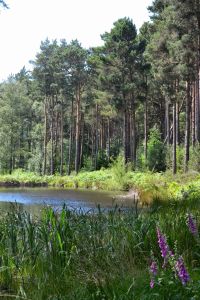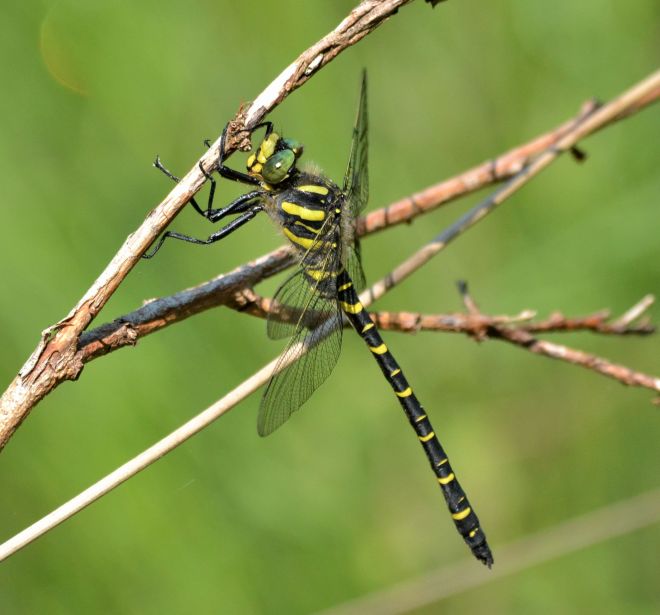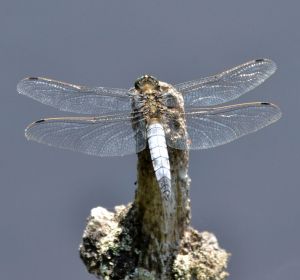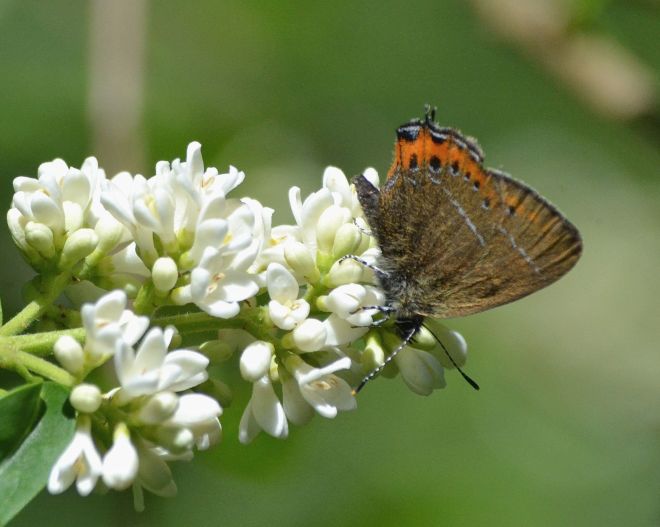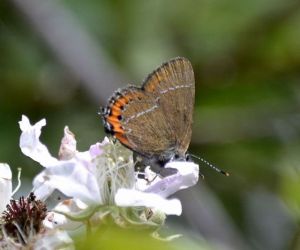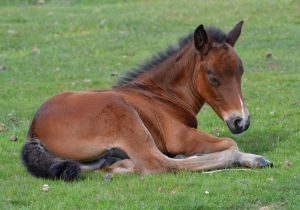This excursion owed most to the need to hit the road and see something after weeks of limited national birding options. I have seen any number of Bee-eaters in southern Europe (pictured below), where to my mind this is one of the most charming and evocative of summer visitors. So with up to seven birds present 110 miles from home in the East Midlands all this week, putting the beautiful EBE onto my British list offered sufficient motivation for a much needed day out.
It seems plain that small numbers of these birds have been roaming England this summer, being a species that is tipped to expand its range northward due to climate change. Indeed some passed through Oxfordshire in late May but were seen for around eight seconds by just one sharp-eyed patch worker. Since last weekend a cluster has been frequenting an active gravel extraction site East Leake Quarry (SK564248), a little to the north of Loughborough and fairly close by the M1 motorway.
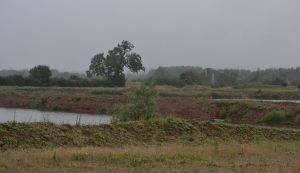
East Leake quarry on a dull and damp day. The Bee-eaters favoured the large Ash tree in the centre
I arrived there late morning in drizzly conditions and was surprised by the number of birders cars parked in a roadside lay-by and an RSPB-stewarded field opposite. ‘Well if there’s this many people here the birds must be showing,’ I thought. But on reaching the viewing area close to the quarry (pictured above), I was told they had flown off around 40 minutes earlier. Recollections of recently dipped Marsh Warbler and Elegant Tern stirred inside me but there was nothing to do but wait.
After about 20 minutes a first European Bee-eater was called and pretty quickly five birds alighted into the trees pictured below, left. The right hand photo is intended only to convey how this tick for blighty was first seen by myself. The unfolding action was viewable just from a limited area, and this prompted some chuntering by people standing further back who seemed to expect an unrestricted view. I was reminded of last autumn’s Dusky Thrush twitch in the Peak District, so maybe such grumpiness is a matter of dealing with dour Derby folk.
In the meantime Adam had arrived on site, and we stood around chatting about Oxon birding matters, insects and plants to occasional disapproving glances, until the Bee-eaters chose to show themselves more openly. Eventually, at around 12:45pm three of the birds settled in dead branches at the crown of the Ash tree featured in many of the published pictures on RBA (see here). Now everyone present could see them well, as had been the likelihood all along, and they proceeded to put on a bit of a show.
I just love the way multi-coloured Bee-eaters move and sound and nothing else resembles them. Time and again the three birds here would glide out from their perches like over-sized hirundines to catch, well presumably bees. This was the first time I have actually seen them perched with prey in their open bills, that they would then knock against the wood of the tree to stun or kill before swallowing. In the light I was not going to get good pictures and so I used my digiscoping kit with my camera set to its highest ISO rating.
The edited results (above) resemble water colours and I rather like them despite their obvious lack of technical merit. As always they show how these birds were seen and prove that I am not making all this up. Adam and I left at 2pm though the Bee-eaters continued to entertain their audience until mid-afternoon and were reported again in the evening. It had been a little incongruous to watch birds so suggestive of balmy Mediterranean landscapes going about their business on a dull and dour English summer’s afternoon. But this is likely to become an increasingly frequent sight here and adding EBE to my own British list was a thoroughly worthwhile experience.
Addendum: On 20th July the RSPB announced that one of three active nests being guarded had hatched chicks. This represents only the third British breeding record in the last 10 years. See here for details. By 2nd August all three nests had hatched young but shortly afterwards it was announced they had failed and the birds left the site.








